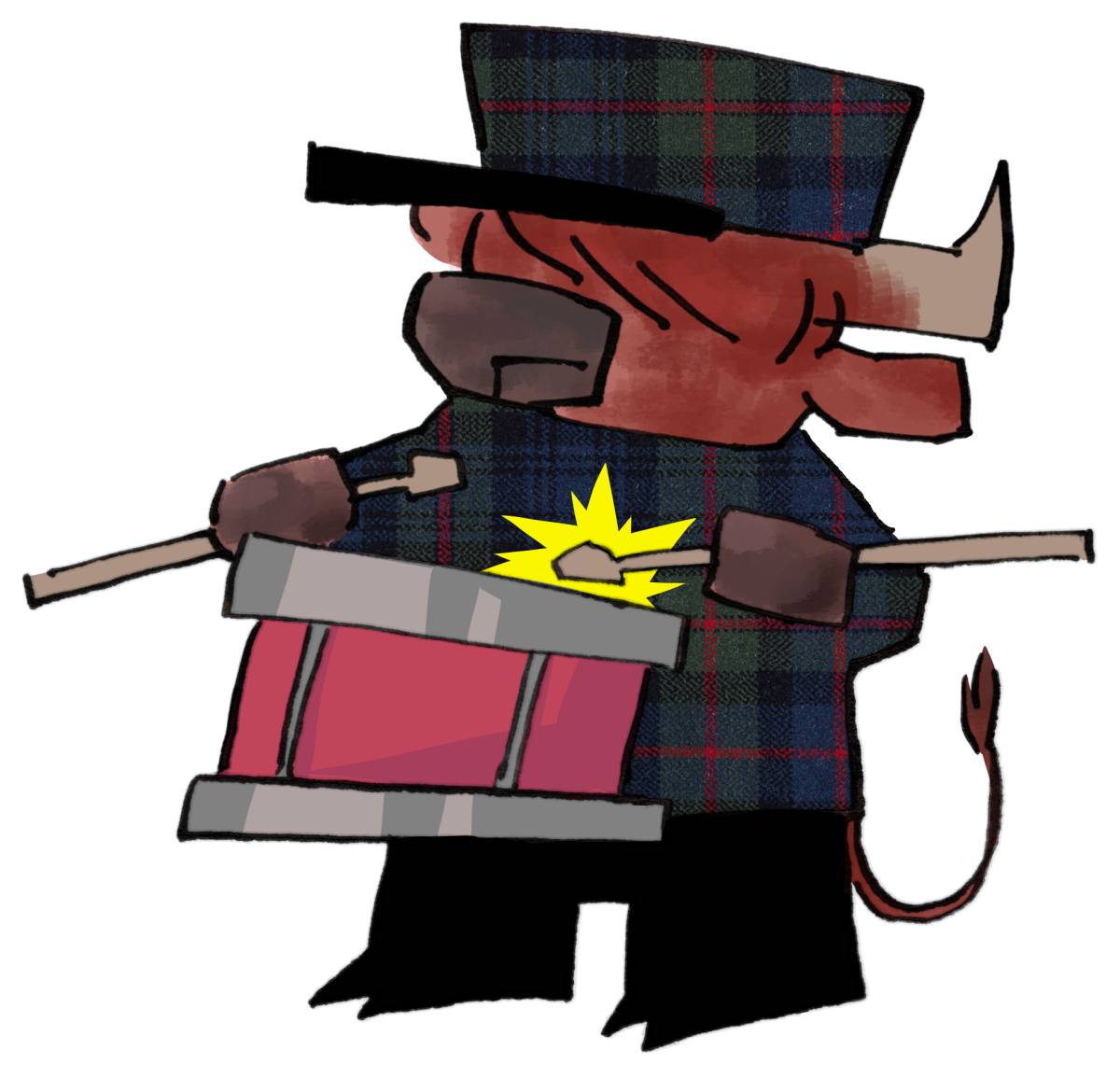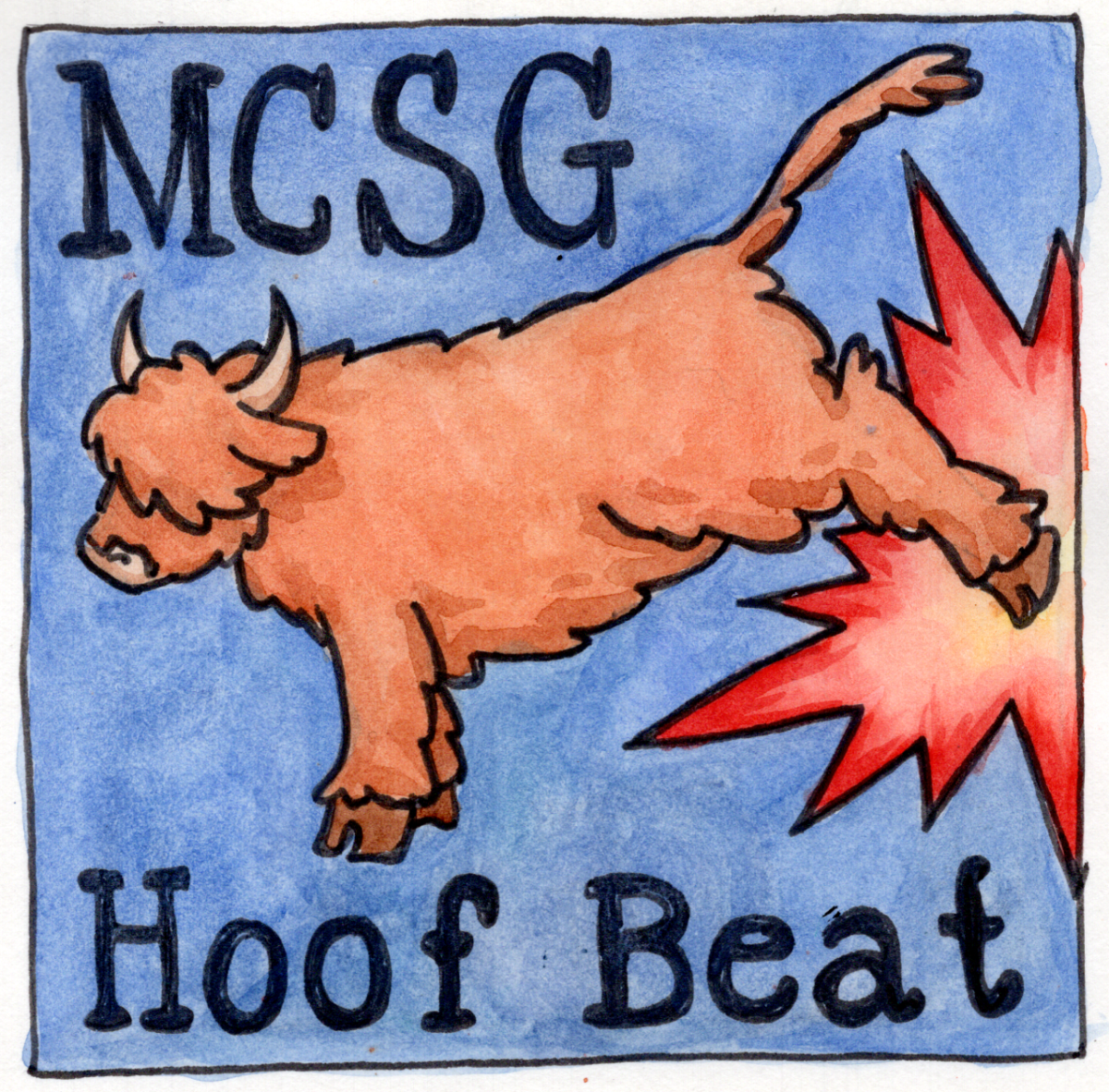This fall, returning Macalester students may have sauntered to their favorite DeWitt Wallace Library study spots only to find a couple brand-new walls impeding access to their preferred cozy corner. Fear not, observant Macites: although the two freshly partitioned spaces blend in and look as if they’ve existed forever, they were indeed created anew this past summer and early this semester.
The most obvious alteration was the conversion of the north study/reading room on the library’s third floor. A previously open reading room—room 309—that is almost identical to the third floor’s west reading room was, over the summer, redeveloped into an entirely new type of space. As Library Director Terri Fishel explained, “It started several years ago with a request from the period provost, but by the time we finally got funding, it was last summer.”
The intention of this long-planned project was centered around a couple specific needs on which library staff received feedback on, namely relating to the types of spaces available.
“The original purpose of the room was for it to have more technology than it currently does—it now has the one portable screen—and we’ve also been having issues with a lack of group study space available at night,” Fishel said.
Beyond student needs related to collaborative, technologically flexible study space, the recently created room offers a much-needed further resource for the Jan Serie Center for Scholarship and Teaching (CST), which is housed directly across the third floor in an identical former reading room.
“The other need was to have a larger meeting space for the CST. It was chosen because it was opposite from the Serie center, and is a space we are planning to use for faculty Monday and Friday lunches and meeting space for conversations about digital humanities and digital liberal arts, among other uses,” Fishel said.
The erstwhile reading room 309 has been officially christened the Barbara B. Davis SPACE. This clever acronym stands for Scholarship Partnership And Collaborative Engagement. In its page on the library’s website, SPACE is described as “a place for faculty, students, librarians, and information technologists to come together for the purpose of learning and discussing how digital technologies are changing the production, publication, and dissemination of scholarship.”
The description of SPACE’s intended uses is long, and includes everything from conversations about changes in scholarly publishing, to being a resource “for students so they can explore and share independent of faculty when it is appropriate.”
With the SPACE’s variety of intended and potential uses, Fishel made certain to emphasize that it is flexible in use and was created generally in response to heavy demands for certain sizes of spaces in the library and on campus.
“The intent was to meet multiple needs, as we have a lot of demands for this building. The Harmon Room is always being requested; there are a lot of conflicts in terms of it, and so we were trying to limit this room so it didn’t become a second Harmon Room. There’s demand for particular sized rooms on campus along the lines of the Harmon Room and 309— there aren’t that many rooms that have that specific size,” Fishel said.
Due to funding restraints, the improvements to the room this summer were limited to constructing the wall and door, as well as purchasing all-new furniture for SPACE and the one portable screen, so students will not see any other changes as they walk past the third floor.
The SPACE, at least for this school year, has one major difference from the library’s other student group study rooms. SPACE is not currently reserveable or available for student use during the workday hours. The space is configured, Fishel said, for meetings related to the CST and staff during the day, and students in the evenings. This arrangement is meant to meet the needs of all users, and Fishel noted that nothing is set in stone yet, as far as usage goes.
“We’re just trying to see what works; we weren’t sure what types of activities would take place in the room,” Fishel said. In terms of usage and success thus far, Fishel said, “I don’t know how much it’s being utilized by students at night—we do use counts at night and I haven’t checked in yet to see what the usage counts are.”
Indeed, the library website provides a highly specific explanation for SPACE’s usage and availability policies for the 2016-2017 academic year, stating: “For the first year, use of this room will be limited to those events that are related to the Digital Liberal Arts and scholarly publishing…Priority will be given to CST and Library use of the room during the day. Evening use will be for students, beginning at 5 p.m. for group work.” Additionally, for the time being, SPACE is locked and not available for student use on weekends.
At this point in the semester, overall, Fishel believes that the multifaceted Barbara B. Davis SPACE has been a positive new library resource.
“It has has been a great addition during the day—so far the room has worked out very well, and we’re giving ourselves the year to see how it goes,” Fishel said.
Early this semester, in a fashion akin to something out of Harry Potter, a tall grey temporary wall with a single door in the middle appeared in the basement. The wall partitioned off what had been a study space with three to four tables (as well as some shelves that housed remaining VHS media) for at least a year. This study area was in the far southwest corner of the basement. Prior to being the study space with tables, it had long been the location of more shelves of old media. The mystery, though, was flummoxing—why did this wall appear? What is its purpose? Luckily for us, Fishel was able to shine some light on and explain this second new wall.
“It is a flexible, temporary wall that we put up in relation to acquiring a set of papers; a special collection that is of interest to faculty in history and American studies, and they are interested in using these papers in a history class. We needed a space where we could both store the materials and have a teaching lab,” Fishel said.
Why was this particular area of the library basement chosen for this project’s location? Simple space constraints were the main factor.
“There was no other space in the library that we could have used. During the summer when we looked for a space and were trying to figure out what we could do, the lower level seemed like the best spot. It seemed to be a lower-use area than other spaces,” Fishel said.
The area also already had shelves that had been home to the old VHS tape collection that now are necessary to store the boxes of materials.
While the base answer to why the study area was closed off may be somewhat ho-hum, the archival materials being acquired that will be processed, studied, and stored in this space are anything but.
“This was a request that came from two faculty members, Zornista [Prof. Zornitsa Keremidchieva of Political Science] and Linda [Prof. Linda Sturtz, History Dept. Chair],” Fishel detailed. “The collection of papers is from Louise Walker, who was one of the co-founders of the Walker Art Museum, and the papers are related to her work with corporations on racism issues. Even though this was a collection that was not from someone that had been associated with Macalester, we felt that it provided an opportunity for students to learn what was going on in the 70s with activism in the Twin Cities.”
Despite the cost and logistics involved, Fishel said that “it was worth making an investment, even if it was a temporary one in space, for the processing and study.”
There is no current timeline for the reconversion of the space or permanent storage of the collection, as materials have not yet been received or used in a class. Said Fishel: “I don’t know that size and scope of the collection, so this will be ongoing. Long-term, I don’t know what the solution is going to be, other than digitizing some of what we already have and freeing space.” Macalester Archives are currently tightly squeezed for space and have little room left for a large collection such as this one.





Hannah Young • Sep 11, 2019 at 4:57 pm
I’ve recently started a website, and the info you offer on this web site has helped me greatly. Thank you for all of your time & work.
Irene Underwood • Sep 10, 2019 at 11:06 am
I’m impressed, I have to say. Actually not often do I encounter a weblog that’s both educative and entertaining, and let me let you know, you’ve gotten hit the nail on the head. Your concept is excellent; the problem is something that not sufficient individuals are talking intelligently about. I’m very glad that I stumbled throughout this in my seek for one thing relating to this.
Simon Bond • Sep 8, 2019 at 9:05 pm
Today, with the fast life style that everyone is having, credit cards have a huge demand in the economy. Persons from every area of life are using credit card and people who are not using the card have made up their minds to apply for even one. Thanks for giving your ideas on credit cards.